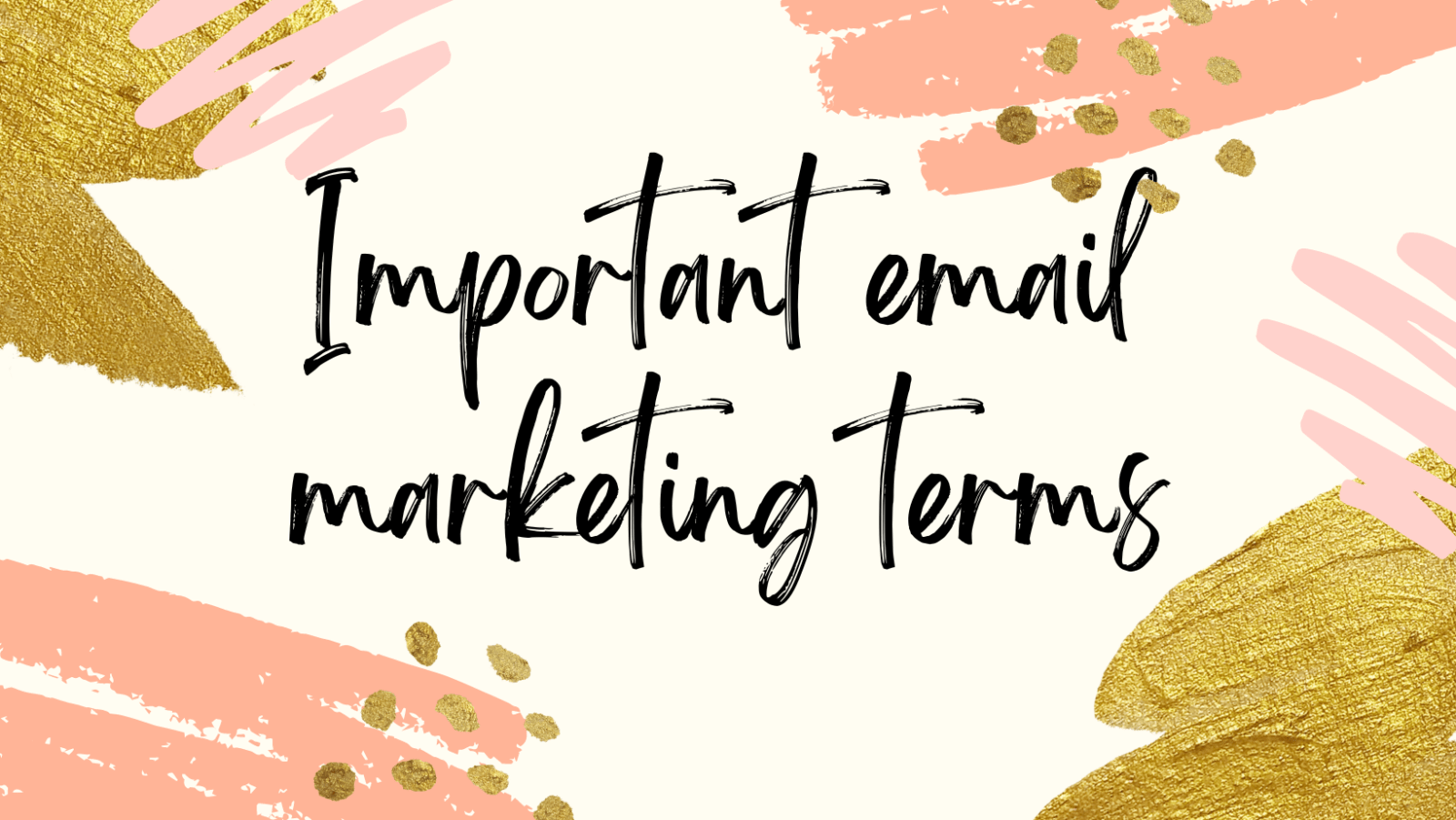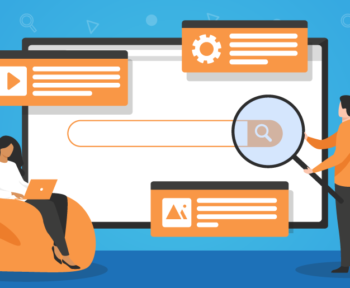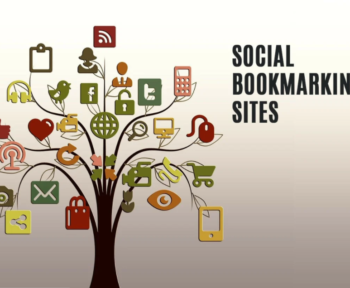Like any vertical reality, the world of email marketing is also full of specific terms in which it is important to extricate oneself so as not to come across bad numbers… What is an A/B test? And what is meant by Open Rate?
Table of Contents
Glossary of important email marketing terms that you should know
We’ve created an email marketing glossary that’s a quick and efficient tool for navigating between acronyms and technical details.
With A
A/B Testing: as its name suggests, it is intended as a testing process through which two possible solutions are “compared”, one called “A” and the other called “B”. A/B testing in email marketing is used to determine which is the most effective choice (whereby effectiveness mean the probability that the recipient of the email clicks on the component) for the definition of the subject, images, texts, buttons, and in general the entire layout.
We begin to test two possible solutions, A and B, for example, a message which starts with a horizontal banner that can be linked and another which has the same banner positioned on the right in the column. The two possible solutions are sent, simultaneously, to two different subsets of recipients, and performance is measured in terms of clicks, response time, and landing page conversions.
Ad-click: the action of the Internet user who clicks on a banner or an ad to connect to the advertiser’s site or page.
Address list: list of addresses used for direct marketing.
Advertising space: space on a web page reserved for banners or other advertisements.
Aida: Attention, Interest, Desire, Action. It is a model that serves to explain the influences of advertising on the consumer and its eventual success.
Announcement: announcement-announcement. Clickable image, button, banner on a website page. Often this is a hyperlink to the advertiser’s website or to another page with more information about the product or service being offered.
API: acronym for Application Program Interface, refers to each set of procedures available to the programmer, generally grouped together to form a set of specific tools for a specific task
ASP: Application Service Provider. How to distribute multi-user applications. The customer can use the service by purchasing it in different ways.
With B
B2B: Business to business. Solutions for economic interaction between companies.
B2C: Business to Consumer. Economic solutions aimed at reaching the end customer of the goods or services sold.
Banner: advertising banner. A popular form of Internet advertising that generates curiosity. The user is invited to click to obtain more information on the proposed service or product. Many formats can be found. It is usually rectangular, long, narrow, at the top or bottom of the web page and features the advertiser’s name, logo, or image.
Brand: the brand.
Branding: all the activities that a company carries out to promote its brand.
Brand loyalty: brand loyalty.
Brochure: high-quality information material.
With C
Click: A method by which the user comes into contact with web pages in order to use the content.
Click through: In the case of email marketing, this is the relationship between the people who received the emails and those who clicked on the links they contain.
Clickstream: the path taken by a user within the same site. The flow of user clicks can be monitored highlighting different behavioral profiles useful to understand the temporal preferences of the contents of the site visited.
Cobranding: on the web, we mean the juxtaposition of logos belonging to different partners on the same page.
Confirmed opt-in: The recipient of the e-mail after having voluntarily subscribed to a newsletter receives a subscription confirmation e-mail.
CRM: Customer Relationship Management. Set of activities aimed at optimizing all phases of customer management.
Customer profiling: a system that allows the behavior of each individual user on the site to be identified and therefore to discover their interests and preferences.
With D
Database: electronic archive in which data are collected that can be modified and consulted according to its requests.
Marketing database: archive with data of potential or actual customers of a company.
Direct email marketing: send personalized messages to a group of users registered on a mailing list.
Direct mail: sending material to the potential customer.
Direct marketing: technique by which the company communicates directly with its customers or prospects.
Double Opt-In: the user who subscribes to a newsletter receives an e-mail message to which he must respond. In this way, confidentiality is guaranteed.
With E
Email: Email It is a type of communication introduced by the Internet which is based on the exchange of deferred messages via computer.
Emails can have different formats: plain text (txt) or HTML. Emails in Html format are supported by all email clients. The use of HTML code allows the creation of graphically very beautiful e-mails, with texts formatted in several ways, with animations, internal links, graphics, and other elements.
Email marketing: marketing strategy based on the use of email as a fast and ubiquitous communication channel.
With F
FAQ: Frequently Asked Questions. Or recurring questions. A series of possible questions a user might ask and their answers.
Feedback: responses, feedback. You can get feedback from responses from users who have completed a web form.
Form: Form to be completed online, it is an important source for retrieving user data.
Forum: online discussion group on a specific topic.
With L
Loyalty: a marketing technique by which we aim to maintain a close and lasting bond with our customers.
Landing page: in web marketing, this is a specifically structured web page that the visitor accesses after clicking on a link or an advertisement, just like in your DEM or newsletters. This page is specially developed to cover specific topics: it displays content that is an extension of the link or advertisement and is optimized for a specific keyword or phrase, to “attract” search engines.
With M
Mailing: the action of sending mail, on the web we mean advertising sent by e-mail to customers.
Mailing-list: list of people subscribed to an email distribution service on specific subjects.
Marketing automation: a system for optimizing customer acquisition processes, further aligning the Marketing and Sales functions to increase the efficiency of both and improve the profitability of lead generation campaigns. You can use the Info email API to achieve these goals.
Market niche: a group of buyers who share common characteristics.
With N
Network label: Set of rules, directives to be followed for the correct use of the Internet. It does not fall under the Italian legal system. The user must respect the principles set out in the contract that he concludes with the Internet service providers with which he has access to the Internet.
Newsgroup: public discussion space for dialogue on specific topics.
Newsletter: e-mail message that is sent to recipients who have given their consent. Contains up-to-date information on some favorite topics.
With O
One-to-one marketing: term born in the 1980s in Japan which designated the marketing of industrial goods made to measure for the consumer. Today, on the Internet, one-to-one marketing actions are defined as those of communication aimed at the individual user; clearly, to be effective, you need to have a good knowledge of the market, of the target audience.
Opt-in: how to subscribe to the newsletter. The recipient agrees to receive future emails.
Opt-out: the recipient is subscribed to a newsletter without their knowledge. When you receive the email, you may be given the option to unsubscribe from the service. This modality, according to the principles of Netiquette, must be considered spam.
With P
Permission marketing: is a marketing technique with which consumers are asked in advance for permission to be able to send them information about products, services, etc.
Prospect: potential customers.
With R
Reimbursement: The number of responses for a promotional or commercial operation.
Remarketing: new marketing actions to revitalize declining demand.
Report: a set of data summarizing the progress of an advertising campaign.
Enriched mail: e-mail enriched with multimedia content. Transforms e-mail from a static medium into an interactive and dynamic medium.
With S
Spam: unsolicited bulk e-mail. It violates Netiquette and Law 675/96 on the protection of persons and other subjects regarding the processing of personal data.
Spamming: sending unsolicited electronic communications from users to a long list of recipients.
Statistics: fundamental tool of email marketing to be able to have control over all the operations carried out by the user on the site.
With T
Target: a group of customers towards which a company directs its commercial attention.
Identifying a target means acquiring information such as age, sex, profession…
Target market: the part of the market that the company is targeting.
With H & U
High-end: luxury goods market.
Up to date: current, modern.
With V
Viral marketing: type of communication that pushes the recipient to transmit it in turn like a virus. It’s the classic “word of mouth” adapted to the web.
Virus: it is a program capable of reproducing itself inside programs. It has an effect that can manifest itself in both temporal and behavioral conditions.
With W
Webform: form to request information or subscribe to the newsletter.
WYSIWYG: What you see is what you get. What you see is what you get.






1 Comment